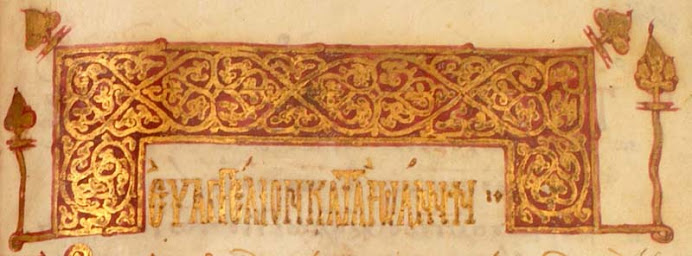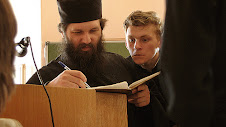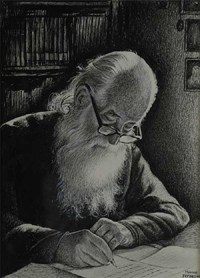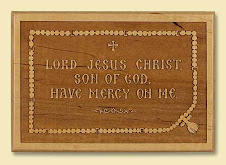Today, Bright Friday, we celebrate the consecration of the Church of the Mother of God of the Life-Giving Spring and the miracles wrought therein. Here is how S. V. Bulgakov describes today's commemoration:
On this day in Matins the stikhera of the full canon in honor the Mother of God composed by Nicephorus Callistus (14 century) in memory of the rededication of the Temple of the Theotokos, named the Life-bearing Spring, are joined to the festal stikhera and troparia of the canon.The relevant Wikipedia article relates the following sad account of the subsequent history of this church:
According to the Synaxarion, the Life-bearing Spring (in the vicinity of Constantinople) was revealed to the Greek Emperor Leo the First when he was yet a simple warrior (in 450). Once as he was walking about the grove surrounding this spring, Leo met a blind man, exhausted from thirst and weariness, wandering about. Wishing to help the blind man, Leo went to find water and after a long vain search he heard a voice which pointed out the spring to him. With the water of this spring, Leo quenched the thirst and opened the sight to the blind man. Leo, after rising to the Greek throne, constructed a temple on this place in the name of All Holy Theotokos, calling his temple the Life-bearing or Life-receiving Spring. Many of the infirm received wonderful healing from this Life-giving Spring, which the Synaxarion commemorates on the present day.
In the hymns for this day the Life-bearing Spring is glorified as an ever flowing source of grace diversely manifested to the believer after powerful petition to All Holy Theotokos. Remembering in its hymns the wonderful signs of the grace of God revealed during the passage of time at the Life-bearing Spring, the Holy Church at the same time calls for its children to worthily magnify and glorify the Virgin Theotokos.
After he became emperor, Leo built a church dedicated to the Theotokos of the Life-giving Spring over the site where the spring was located.[2] After the Fall of Constantinople in 1453, the church was torn down by the Turks, and the stones used to build a mosque of Sultan Bayezid. Only a small chapel remained at the site of the church. Twenty-five steps led down to the site of the spring surrounded by railing. As a result of the Greek Revolution of 1821, even this little chapel was destroyed and the spring was left buried under the rubble.For more on today's commemoration, see here and here. See also the service in Greek and Slavonic. Of related interest is Fr Ephrem's short paper explaining why the Greek word zoopoios should be translated as "life-giving" rather than "life-creating."
In 1833 the reforming Ottoman Sultan Mahmud II gave permission for the Christians to rebuild the church. When the foundations of the original church were discovered during the course of construction, the Sultan issued a second firman permitting not only the reconstruction of the small chapel, but of a large church according to the original dimensions. Construction was completed on December 30, 1834, and the Ecumenical Patriarch, Constantine II consecrated the church on February 2, 1835.
On September 6, 1955, the church was destroyed again by Moslems during a riot. Another small chapel has been rebuilt on the site, but the church has not yet been restored to its former size. The spring still flows to this day and is considered by the faithful to have wonderworking properties.
Please note that I am having trouble with my internet connection. This may result in an interruption in posting until the problem is resolved.










No comments:
Post a Comment